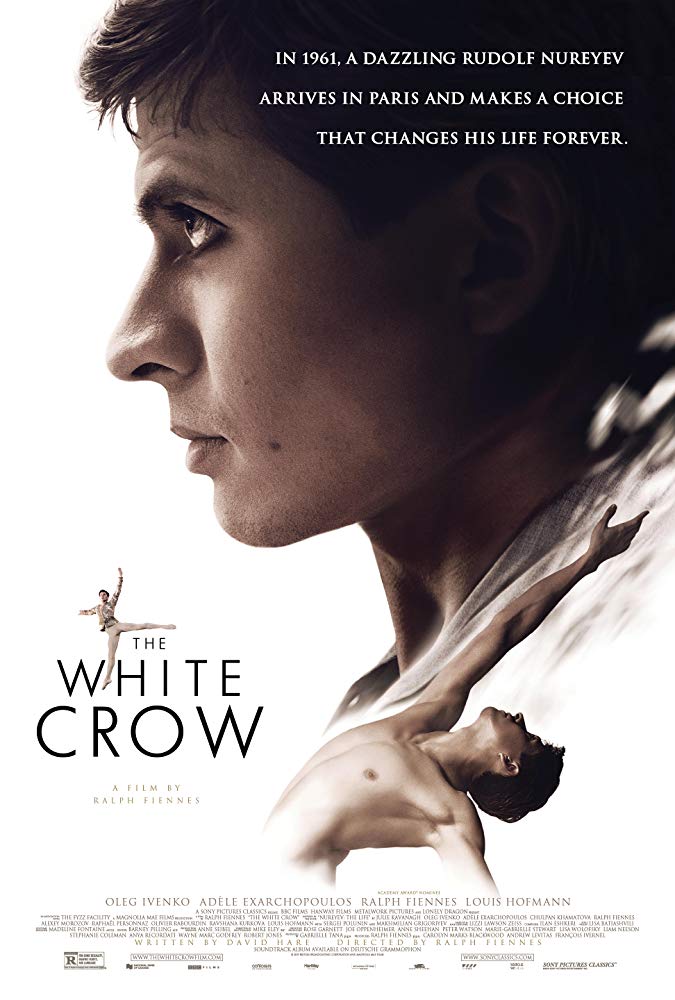The White Crow
Directed by Ralph Fiennes
Screenplay by David Hare based on “Nureyev: The Life” by Julie Kavanagh
Starring Oleg Ivenko, Adele Exarchopoulos, Chulpan Khamatova, Ralph Fiennes, Alexey Morozov, Raphael Personnaz, Olivier Rabourdin, Sergei Polunin
You might hear someone say that there is no destiny. That we make up our own story as we go along. That is true to a certain extent, Our stories are informed and influenced by external factors, yet what makes us “unique” is how we allow those influences to guide us. At the end of the day, the human spirit is an indomitable one.
This brings us to Rudolf Nureyev, the real-life subject of Ralph Fiennes’ latest film, “The White Crow.” Nureyev was Russia’s greatest gift to ballet. He was a troubled soul though, which is the subject of David Hare’s adaptation of Julie Kavanagh’s “Nureyev: The Life.”
Fiennes offers us a minor glimpse in to the beauty and tragedy of this young ballet dancer who dreams of making it big one day. The stage is Paris, in the early 1960’s. Young Nureyev has been granted a chance by the State to study with the best ballet instructors. We are treated to his early failures, but what interested me in Oleg Ivenko’s performance is how committed and how driven he remained to his studies.
In fact, early in the film his inexperience is mentioned in relation to his age. He is so fiercely sure that he can advance in the classes that he pushes himself to the breaking point. After a falling out with his assigned teacher, he demands to be paired with the famous instructor, Alexander Ivanovich Pushkin, played by Fiennes in a supporting role.
Pushkin pushes Nureyev to his limit, but doesn’t necessarily provide a motive. When we first see Nureyev dance in Pushkin’s class, the cinematography is reflective, using the mirrors to allow us to see Nureyev from Pushkin’s vantage point. This vantage point, which is beautifully staged, allows us to see the flawed, human Nureyev.
Nureyev’s troubled journey is not merely set in 1961 Paris. Fiennes and cinematographer Mike Eley transition us between the young adult and the child, Nureyev. The unique composition of the images that represent his childhood stand in stark contrast to the determined dancer to be.
It is singly, perhaps, some of the best cinematography I’ve seen in awhile.
Sadly, David Hare’s screenplay doesn’t completely do this film or Nureyev’s true story justice as some of the transitionary drama gets bogged down through several trysts as well as an ongoing adventure to explore Paris and make friends outside of the school, and their Russian handlers.
We know, instinctually, why the story is being told, though it feels almost like we’re being guided through a museum of important events in his life, much like a gallery. The aforementioned transitions help to carry the emotional impact of the film, leading to an emotionally satisfying payoff, rivaling some of the best Le Carre and Clancy adaptations we’ve seen about Soviet Russia in that era.
It isn’t until Pushkin asks Nureyev a pivotal question, that we are able to look past the surface of Nureyev or his drive. That we are able to look past ourselves.
“What story do we wish to tell?”
It’s a very powerful conviction to be able to answer it the way Nureyev ultimately does and the rest is truly history.
2.75 out of 4











